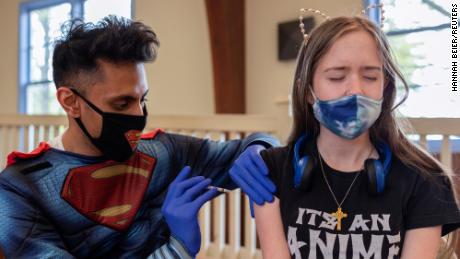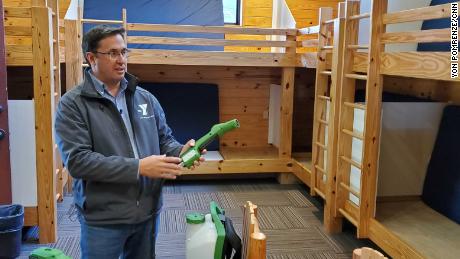In Vermont, for example, that incentive comes in the form of a promise of an early return to a kind of normalcy.
Gov. Phil Scott announced Friday that all of the state’s pandemic restrictions can be lifted if the vaccination rate reaches 80% of eligible residents age 12 and older, even if that’s ahead of the governor’s July 4 target date, a release from his office said.
“Let’s keep our momentum going. Let’s finish strong. Let’s continue to show the nation, and the world, what this brave little state is capable of,” Scott said.
In West Virginia, both those who sign up for a vaccine and those who have already gotten theirs can register to receive $100 in a savings bond or gift card.
And the prize for getting vaccinated could be a million dollars in Oregon, now that the state has started a lottery contest for every resident 12 and older who receives at least one dose by June 27.
The push to increase vaccinations has grown more urgent as the pace has been on the decline. The average daily rate of coronavirus vaccinations is down almost 50% from its April peak, according to US Centers for Disease Control and Prevention data published Thursday.
And with residents in some states moving indoors as the weather heats up, particularly in the South, experts worry what will happen if the decline isn’t reversed.
“If we have large numbers of unvaccinated people in those states, we may very well see a surge in those states, so I think a lot of us are worried about that,” Dr. Ashish Jha, dean of the Brown University School of Public Health, told CNN’s Chris Cuomo this week.
Navigating Covid-19 protection beyond initial doses
Experts have touted vaccinations as an important part of overcoming the pandemic, but the push for protection may continue even after the US reaches an acceptable vaccination level.
Dr. Anthony Fauci, the director of the US National Institute of Allergy and Infectious Diseases, said he is planning on the possibility of people getting booster shots, though experts are still unsure if and when that may happen.
“The fact is we don’t know, but it would really be foolish not to plan for the possibility that we might have to boost people, but there’s no set rule now that says in six months or in a year we’re going to require a boost,” he said on CBS This Morning.
In the meantime, experts will have to keep tabs on the immune response of vaccinated people to see how durable it remains, he said.
The CDC has said that the protection is strong enough that vaccinated Americans don’t have to wear masks indoors. But, Fauci said, it is not irrational if some choose to keep them on anyway.
“You can understand that when people have been following a certain trend for a considerable period of time that it may take time for them to adjust,” said Fauci, the chief medical adviser to President Joe Biden. “I would not say that’s irrational. I would say that’s understandable.”
CDC Director Dr. Rochelle Walensky said that it was understandable that some people are unsure about the new guidance.
“For 16 months we’ve been saying that it’s important to wear these masks to protect yourselves, and now what we’re saying is it’s going to be hard to get back to life as we knew it without these masks,” she said during the White House briefing on Friday. “We’re going to do so by dipping our toe in the water and having everybody move at their own pace.”
Returning to school safely
One milestone of normalcy for many is a resumption of in-person learning for students, but this has been hindered by limited vaccine eligibility.
Currently, the youngest Americans approved to receive the vaccine are 12-years-olds, and studies for vaccine safety in younger children are still ongoing. But those that are now eligible are showing up in disproportionately high numbers.
Adolescents 12 to 15 comprise about 5% of the US population but accounted for nearly a quarter of people to receive their first dose of a vaccine in the past week, according to CDC data.
For those that are still not old enough for inoculation, a CDC study finds that school testing programs can help in-person instruction and extracurriculars to continue.
In the study published Friday, the CDC’s Morbidity and Mortality Weekly Report detailed two Utah programs in which students were either tested every 14 days to be allowed to continue their extracurriculars or were tested in response to outbreaks.
Over the course of the study, 59,552 students were tested as part of the two programs. Only 3.2% of students tested returned a positive test result.
Researchers credited these programs with preserving 95% of planned athletic events, and for saving an estimated 109,752 days of in-person instruction among all the students tested in participating schools.
Staff wearing masks and better ventilation in schools could also be helpful to mitigate cases in elementary schools, another CDC study said.
Case numbers in elementary schools appear to be 37% lower when teachers and staff are required to wear masks, and 39% when air ventilation is improved, that CDC study found.
CNN’s Rebekah Riess, Travis Caldwell, Melissa Alonso, Andy Rose, Naomi Thomas, Jacqueline Howard, Deidre McPhillips and Virginia Langmaid contributed to this report.



